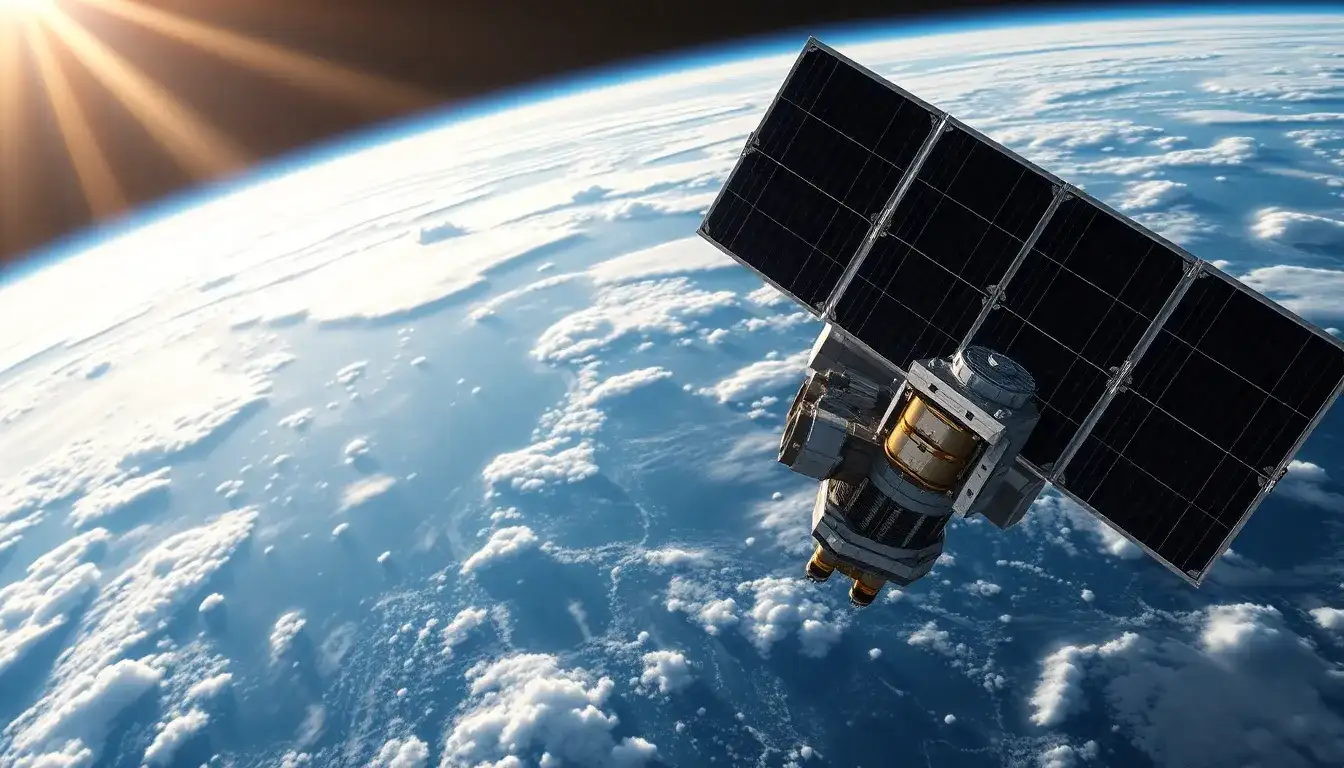Space-Based Solar Power: The Future of 24/7 Clean Energy Generation
Imagine a field of solar panels floating silently in the endless daylight of Earth’s orbit. Unlike their terrestrial counterparts, these space-based solar arrays are not hindered by nighttime, clouds, or atmospheric interference. Instead, they are constantly bathed in intense sunlight, converting this continuous stream of energy into electricity with remarkable efficiency. The true innovation lies in how this power is transmitted to Earth’s power grids.
Electricity generated in space is transformed into invisible beams of microwaves or laser light that can penetrate the atmosphere with minimal energy loss. These beams are precisely directed at receiving stations on Earth—collections of antennas or receivers known as “rectennas.” These rectennas capture the energy and reconvert it back into electricity for the power grid. This is not science fiction; it is the concept of space-based solar power (SBSP), a technology that has the potential to revolutionize clean energy generation and distribution.
While conventional solar panels on Earth can only operate during daylight hours and are subject to weather conditions, orbital solar arrays could deliver vast amounts of clean energy to Earth 24/7, 365 days a year, thereby transforming the global energy landscape. “It’s not really that different from solar PV,” explained Dr. Leet Wood, chief energy advisor for the Space Frontier Foundation, during his appearance on The POWER Podcast. “Various architectures have been considered over the years, but we are focusing on a large-scale satellite equipped with a significant solar PV array in geosynchronous orbit.”
Due to the distance from Earth and the nature of the orbit, these panels would be exposed to sunlight almost continuously, making it easy to predict any eclipses. “That, right there, is one of the main differences,” Wood stated. “You’re not dealing with the day-night cycle or weather issues. These solar panels are constantly irradiated.” The direct current (DC) power generated by the array is converted into a high-power microwave beam, using technology similar to existing military radar systems. This beam is sent to Earth, where it is received by a large rectenna, a kind of expansive wire mesh. The microwave radiation is then converted back into DC power and transformed into alternating current (AC) for use in the local grid.
“The behavior of space-based solar power is unique as an energy resource,” noted Alex Gilbert, a fellow at the Payne Institute for Public Policy, during the podcast. “It resembles renewable energy in that it has relatively limited environmental impacts—though we must consider the minor emissions from rocket launches—but from a greenhouse gas perspective, it is likely to be a net carbon reducer.”
Furthermore, SBSP offers significant flexibility, as power can be beamed to any location within the satellite’s line of sight. Gilbert pointed out that this flexibility allows for better siting opportunities, enabling the placement of rectenna stations in areas with less constrained transmission grids. “You can potentially split the beam and direct it to multiple markets,” he added. “It’s a unique resource that serves as both a baseload and dispatchable energy source.”
Although the technology is well understood and has been contemplated for decades, the high cost of launching the necessary equipment into space has been a barrier. However, this situation is beginning to improve, thanks to advancements made by companies like SpaceX. “We’ve seen a significant transformation in the space sector over the last 10 to 15 years,” Gilbert noted. “This change has been largely catalyzed by SpaceX and other launch vehicle providers like Blue Origin and Rocket Lab. Space is no longer just for government applications; it’s increasingly commercial, leading to significantly lower launch costs.”
The advent of reusable rockets, such as Blue Origin’s New Glenn, which is designed for a minimum of 25 flights, is expected to further reduce costs. “If you can reuse rockets even once or twice, it fundamentally changes the economics of launching payloads into space,” Wood explained.
Currently, numerous satellites already orbiting are utilizing solar power, demonstrating the robustness and reliability of this technology. Gilbert cited the rapid growth of the Starlink satellite constellation, which has expanded from zero satellites just six or seven years ago to around 7,000 today. He highlighted that this megaconstellation has already contributed dozens of megawatts of solar power in orbit and anticipates even more growth with similar projects from Amazon Kuiper and initiatives in Europe.
However, while the U.S. leads in space technology, its SBSP program is lagging behind other countries. Gilbert pointed out significant efforts in the European Union, China, and Japan, often spearheaded by their governments. “China has a clear government policy to develop SBSP,” he noted. “Unfortunately, the U.S. government does not see this as a major area of innovation. The Department of Energy lacks a dedicated SBSP program, treating it as merely another energy technology.”
Despite this, startups focused on developing SBSP technology have emerged in the last 12 to 24 months, seeking venture capital funding to bring their ideas to fruition. Funding the first SBSP plant presents challenges, with initial development expected to rely heavily on government support and securing anchor tenants, such as the Department of Defense.
Looking ahead, the timeline for launching a SBSP plant remains uncertain. “It largely depends on whether launch costs continue to decrease and on the level of government intervention,” Wood said. “If these factors align positively, we could see a gigawatt-class plant operational by mid-century.” Gilbert added that significant research and demonstration work is underway, especially with laser-based technologies, and the first on-orbit power-beaming demonstrations are expected in the next five years.
To delve deeper into the insights shared by Wood and Gilbert regarding SBSP technology, hurdles to commercial success, and potential benefits beyond continuous power generation, listen to the full interview on The POWER Podcast.
For more power podcasts, visit The POWER Podcast archives.
Original article by NenPower, If reposted, please credit the source: https://nenpower.com/blog/the-promise-of-space-based-solar-power-a-new-era-for-24-7-clean-energy/



